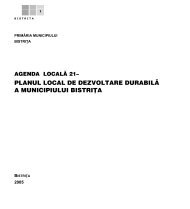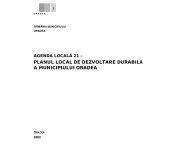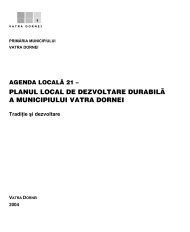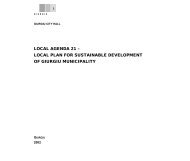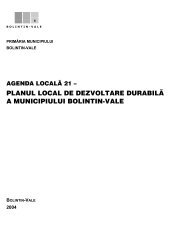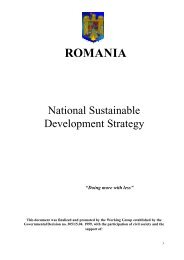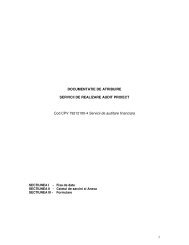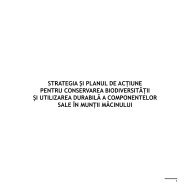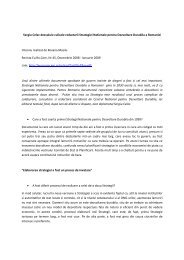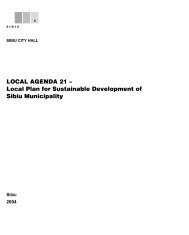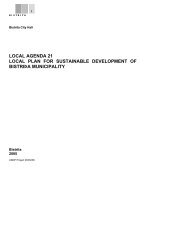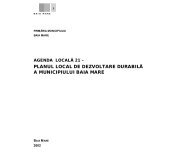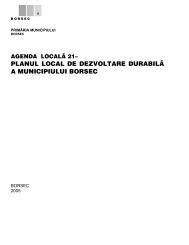local agenda 21 local plan for sustainable development for the ...
local agenda 21 local plan for sustainable development for the ...
local agenda 21 local plan for sustainable development for the ...
Create successful ePaper yourself
Turn your PDF publications into a flip-book with our unique Google optimized e-Paper software.
11<br />
MEDGIDIA<br />
THE SUSTAINABLE DEVELOPMENT<br />
STRATEGY<br />
I. THE EVALUATION OF THE SOCIO-ECONOMIC SYSTEM<br />
IN MEDGIDIA<br />
I.1. THE NATURAL CAPITAL<br />
I.1.1. Hystorical background<br />
Only few months later, <strong>the</strong> city had 15,000-20,000 citizens<br />
with 1,000 houses and many more under construction.<br />
The Turkish government still maintained, <strong>for</strong> almost 100<br />
years by that point, <strong>the</strong> Panaghirului Hill fair, where <strong>the</strong>y<br />
had built sheds and shops. Merchants from all throughout<br />
<strong>the</strong> country and beyond were exposing <strong>the</strong>ir agricultural<br />
and menial products <strong>the</strong>re.<br />
During <strong>the</strong> fairs from spring and autumn, <strong>the</strong> trade lawcourts<br />
from Constanta and Tulcea came to Medgidia in<br />
order to facilitate commercial transactions.<br />
After <strong>the</strong> War of Independence (1877- 1878), Dobrogea<br />
was re-attached to “<strong>the</strong> mo<strong>the</strong>r nation” - Romania - and<br />
<strong>the</strong> Medgidia Fair was reborn and organized.<br />
The first human settlement on this territory was established<br />
in <strong>the</strong> Neolithic period, as illustrated by <strong>the</strong> discovery of a<br />
manual cereal mill and a series of ceramic objects pertaining<br />
to <strong>the</strong> Hamangia culture. In <strong>the</strong> year 46 CE, <strong>the</strong><br />
settlement was under <strong>the</strong> direct administration of <strong>the</strong><br />
Roman Empire.<br />
A human settlement and a <strong>for</strong>tress, known as Carasu Area,<br />
were found at that time on <strong>the</strong> spot of <strong>the</strong> current municipality<br />
of Medgidia. At <strong>the</strong> end of <strong>the</strong> Russian-Turkish war,<br />
<strong>the</strong> sultan Abdul Medgid repopulated <strong>the</strong> old Carasu<br />
settlement. He ruled from January 7th 1839 until <strong>the</strong> 25th<br />
of June 1861. He was <strong>the</strong> son of Mahmud <strong>the</strong> Second<br />
and his actions proved he was much more open to<br />
progress and democracy than his <strong>for</strong>erunners. Abdul<br />
Medgid founded <strong>the</strong> “Medgidia” medal, which was later<br />
given to <strong>the</strong> painter Theodor Aman.<br />
In 1865, <strong>the</strong> inhabitants requested from <strong>the</strong> governor of<br />
Dobrogea that <strong>the</strong> new <strong>local</strong>ity be named Medgidia, as a<br />
sign of gratitude towards <strong>the</strong>ir protector, Abdul Megid.



